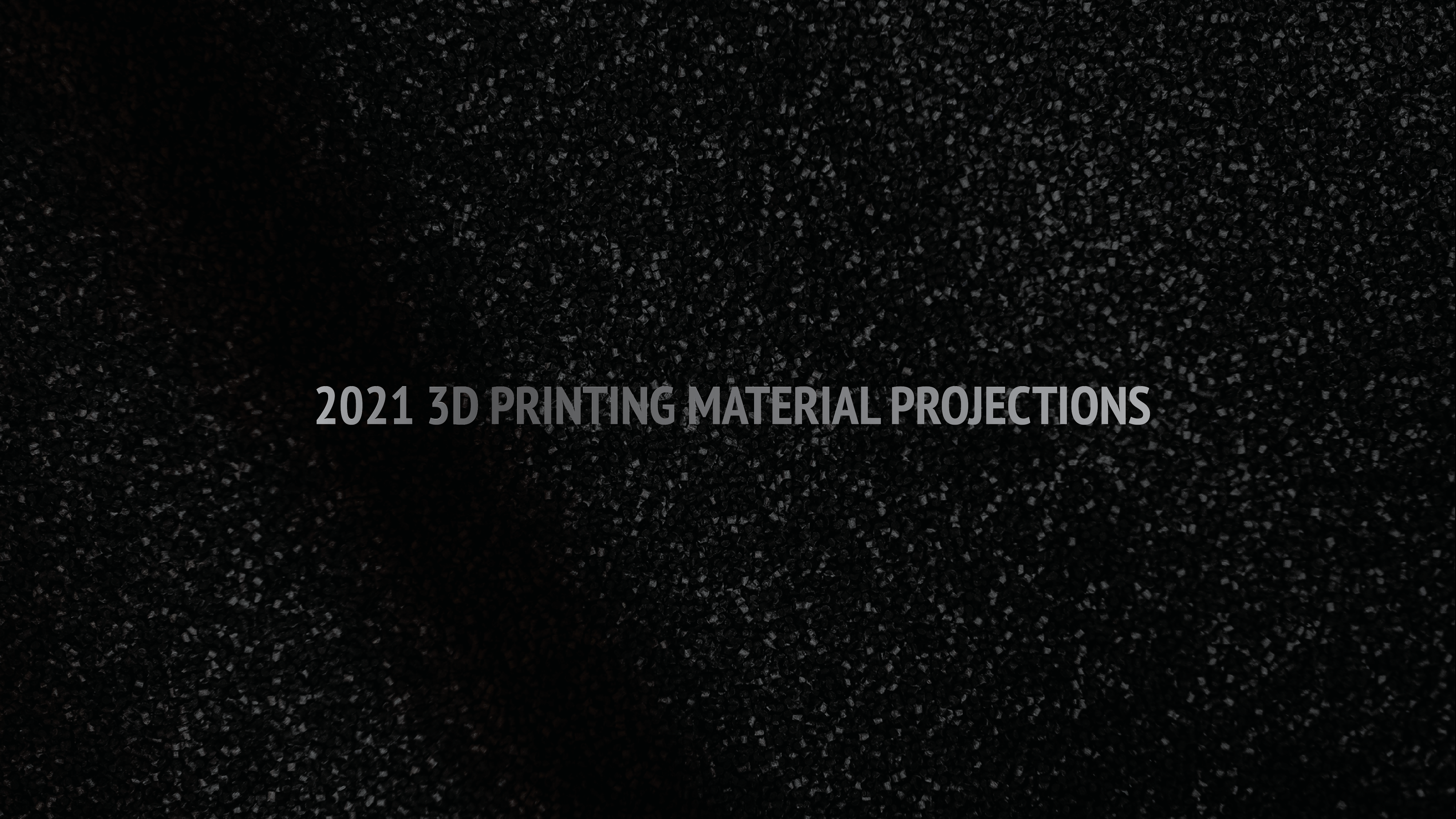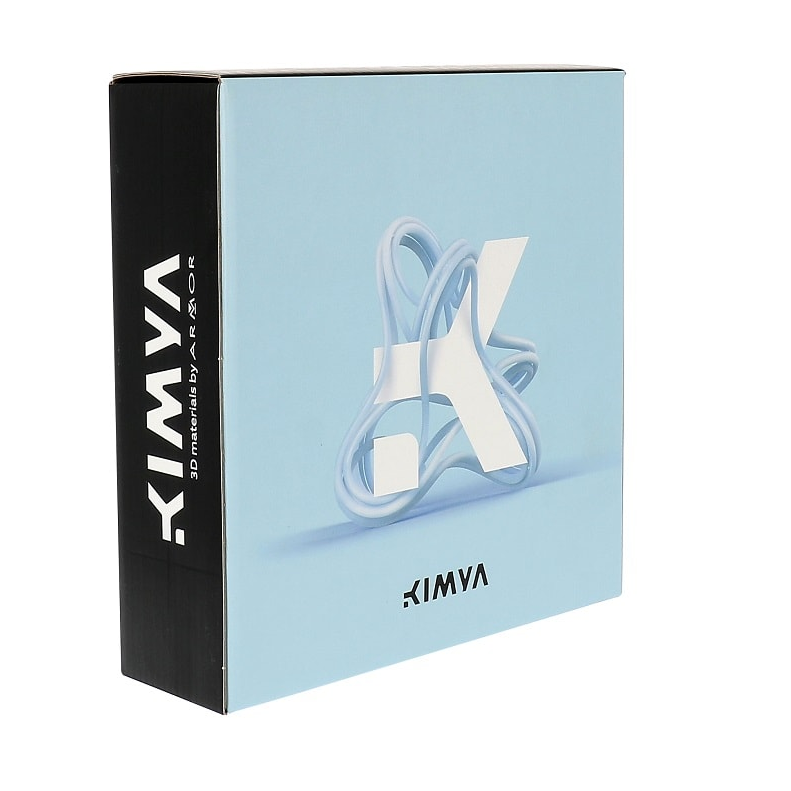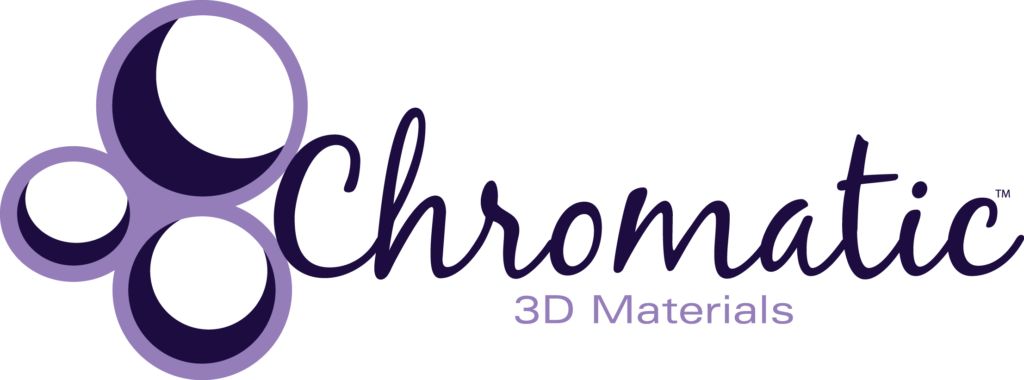3D Printing Materials – 2021 Projections
Materials’ Influence on the Market

In most 3D Printing projects, application drives material requirements. Materials can be categorized in many ways: metals and polymers, filament and powder, structural versus decorative. Wohlers Associates classifies polymers in two groups based on their behavior at high temperatures: thermoplastics or thermosets.
Thermoplastics can be repeatedly melted, cooled and solidified, and melted again. These polymers are commonly processed as filaments, powders, or pellets. Thermosets are permanently “set” once they are polymerized and do not set and are commonly processed in additive manufacturing as photopolymers or inks.
While a growing number of materials have been introduced to the market, the options remain limited compared to those available for conventional manufacturing. New materials are regularly introduced to meet the growing versatility and demands of 3D printing, and new companies are being formed from start-ups, mergers, and acquisitions.
So, what should you be on the lookout for in 2021? During JuggerBot 3D’s 2020 Material Round-Up, panelists teased the audience with a glance at their 2021 plans.
Kimya Additive Manufacturing
Kimya is a brand of the ARMOR group, dedicated to developing custom materials for additive manufacturing. They provide material development services, 3D printed parts, and a range of filaments through Kimya Lab, Kimya Factory, and Kimya Materials.

“We’re seeing people buying 3D printers at a record pace,” said Chad Lynn, Business Development Manager for Kimya Additive Manufacturing. “The other thing we’re seeing for 2021, specifically, is the demand for more high temp materials and more chemical resistant materials.”
Lynn also hinted at the possible launch of high density polyethylene (HDPE) in the first half of the year. The material should represent a low-cost option that is very similar to those currently being used by plastic molders across the globe.
DSM Additive Manufacturing
DSM Additive Manufacturing is an early pioneer of the Additive Manufacturing industry, having over 20 years of sector experience across multiple end-user markets. DSM portfolio of 3D printing products include resins for Vat Photopolymerization (SLA, DLP) and powders for Powder Bed Fusion (SLS), as well as filament and pellet offerings.
DSM Additive Manufacturing has established an ecosystem of partners to help match customers with the best solution for their needs, which includes application and development support programs in collaboration with JuggerBot 3D.

DSM sees similar material requirements in the market, noting durability, UV resistance, and high temperature as desired properties for both their “liquids” and “solids” products. We anticipate an introduction to more resins, powders, and pellets this year. While the details of new product launches were not shared, we can expect them to stray from their regular focus.
Greg Costantino, New Business Development Manager and Application Development for DSM, discussed the recent acquisition of the additive manufacturing business by Covestro. “Covestro has a presence in additive in different chemistries than what we have, so that’s going to strengthen our portfolio and offering to the market,” exclaimed Costantino.
Chromatic 3D Materials
Chromatic 3D Materials is developing 3D printing technology for thermosets, including polyurethanes, silicones, and epoxies. The team, led by Dr. Cora Leibig, is conquering the weighty barriers of the 3D printing industry to “create the durable materials so sorely needed today”.
Unlike common thermosets used in additive manufacturing today, Chromatic’s materials are processed via Direct Ink Writing (DIW), a process that mixes two liquid components (inks) together in the deposition process, triggering a chemical reaction that solidifies the mixture within minutes. JuggerBot 3D works closely with the Chromatic team to refine the systems and DIW process on our Tradesman Series™ F3-32 machine.
Although relatively new, the DIW process is gaining much attention from industrial 3D printers. “For us [in 2021], we’re continuing our progress with getting traction in the market and getting approvals,” stated Dr. Leibig. The company saw increased success for spare parts and low volume production in 2020.
She also previewed a new product expected to launch in 2021 called “Chromamotive”.

“We’re really excited about bringing the market the toughest flexible materials available.”
“Initial results show that it’s about 80% tougher than EPU40 at the same hardness level, and we’re getting the suite of tests done to show really where its performance is,” shared Dr. Leibig. “We’re really excited about bringing the market the toughest flexible materials available.”
Get the inside scoop on 3D printing materials, industrial 3D printing, and JuggerBot 3D by subscribing below!